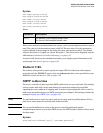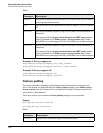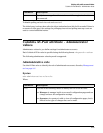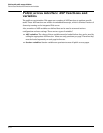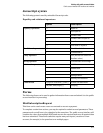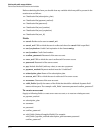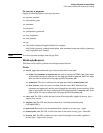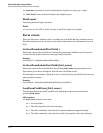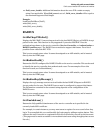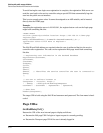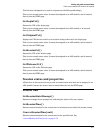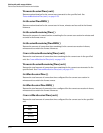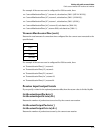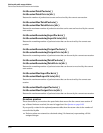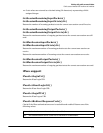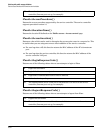
Working with public access attributes
Public access interface ASP functions and variables
field_error_details: Additional information about the error. Will contain an empty
string if not applicable. When field_error is set to 2, field_error_details will be equal to
the maximum supported field length.
Example
LoadFormFieldError("field");
write(field_error);
write(field_error_details);
RADIUS
GetMsChapV2Failed()
Displays the MS CHAP V2 error string received in the last RADIUS Reject or RADIUS Accept
packet for the user. This function is only supported if you select MSCHAP V2 as the
authentication scheme on the service controller (Service Controller >> Authentication >
RADIUS profiles page). The RADIUS server must also support this feature. For a list of
possible return values see RFC 2759.
This is not a normal return value. It cannot be assigned to an ASP variable, and is inserted
directly into the HTML page.
GetRadiusNasId()
Returns the NAS ID configured for RADIUS Profile on the service controller. This can be used
to identify the service controller that authenticated a user. For an example of how this
function is used, see GetNasAddress().
This is not a normal return value. It cannot be assigned to an ASP variable, and is inserted
directly into the HTML page.
GetRadiusReplyMessage()
Displays the reply message content received inside the last RADIUS Request or RADIUS
Accept packet for the user. The RADIUS server must be configured to support this feature.
The information contained in the returned string depends on the configuration of the
RADIUS server.
This is not a normal return value. It cannot be assigned to an ASP variable, and is inserted
directly into the HTML page.
GetNasAddress()
Returns the fully-qualified domain name of the service controller as is specified in the
currently loaded SSL certificate.
For example, in certain instances you may want users to register for an account before they
log in. To accomplish this you could modify the Login page by adding a register button. This
redirects the user’s browser to a registration Web server where they can set up their account.
(This page must be made accessible to non-authenticated users using the appropriate access
list rule.)
9-75



